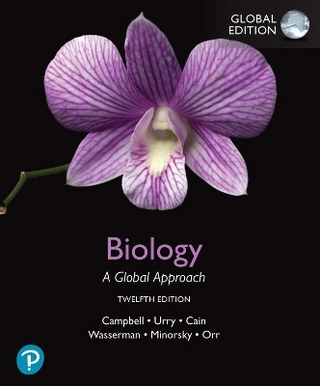
Engineering the Genetic Code – Expanding the Amino Acid Repertoire for the Design of Novel Proteins
Wiley-VCH Verlag GmbH (Hersteller)
978-3-527-60718-1 (ISBN)
- Keine Verlagsinformationen verfügbar
- Artikel merken
The ability to introduce non-canonical amino acids in vivo has greatly expanded the repertoire of accessible proteins for basic research and biotechnological application. Here, the different methods and strategies to incorporate new or modified amino acids are explained in detail, including a lot of practical advice for first-time users of this powerful technique. Novel applications in protein biochemistry, genomics, biotechnology and biomedicine made possible by the expansion of the genetic code are discussed and numerous examples are given. This book is an essential reading for all molecular life scientists who want to stay ahead in their research.
Nediljko Budisa is a group leader at the Max-Planck-Institute of Biochemistry in Martinsried near Munich (Germany). He studied Chemistry and Biology at the University of Zagreb (Croatia) before joining the group of Nobel Prize Winner Robert Huber at Martinsried to obtain his PhD degree. During postdoctoral work with R. Huber and L. Moroder he led an independent research team in protein engineering. In 2004, Dr. Budisa received the BioFuture Award of the German Federal Ministry for Research and Education.
Foreword.Preface.1 Introduction.1.1 Classical Approaches to Protein Modification.1.2 Peptide Synthesis, Semisynthesis and Chemistry of Total Protein Synthesis.1.3 Chemoselective Ligations Combined with Biochemical Methods.1.4 Methods and Approaches of Classical Protein Engineering.1.5 Genetically Encoded Protein Modifications - Reprogramming Protein Translation.1.6 Basic Definitions and Taxonomy.2 A Brief History of an Expanded Amino Acid Repertoire.2.1 The "Golden Years" of Molecular Biology and Triplet Code Elucidation.2.2 Early Experiments on the Incorporation of Amino Acid Analogs in Proteins.2.3 Test Tube (Cell-free) Synthesis of Proteins and Early Incorporation Experiments.2.4 Noncanonical Amino Acids as Tools for Studying Cell Metabolism, Physiology, Protein Processing and Turnover.2.5 Problem of Proofs and Formal Criteria for Noncanonical Amino Acid Incorporation.2.6 Recent Renaissance - Genetic Code Engineering.3 Basic Features of the Cellular Translation Apparatus.3.1 Natural Laws, Genetic Information and the "Central Dogma" of Molecular Biology.3.2 Cellular Investments in Ribosome-mediated Protein Synthesis.3.3 Molecular Architecture of AARS.3.4 Structure and Function of the tRNA Molecule.3.5 Aminoacylation Reaction.3.6 AARS:tRNA Interactions - Identity Sets.3.7 Translational Proofreading.3.8 Ribosomal Decoding - A Brief Overview.3.9 Codon Bias and the Fidelity of Protein Synthesis.3.10 Preprogrammed Context-dependent Recoding: fMet, Sec, Pyl, etc.3.11 Beyond Basic Coding - Posttranslational Modifications.4 Amino Acids and Codons - Code Organization and Protein Structure.4.1 Basic Features and Adaptive Nature of the Universal Genetic Code.4.2 Metabolism and Intracellular Uptake of Canonical Amino Acids.4.3 Physicochemical Properties of Canonical Amino Acids.4.4 Reasons for the Occurrence of Only 20 Amino Acids in the Genetic Code.4.5 What Properties of Amino Acids are Best Preserved by the Genetic Code?4.6 Evolutionary Legacy: Dual Nature of Conserved Code and Finite Number of Protein Folds.4.7 Natural Variations in Assignment of Codons of the Universal Genetic Code.4.8 Codon Reassignment Concepts Possibly Relevant to Code Engineering.5 Reprograming the Cellular Translation Machinery.5.1 Enzyme Specificity of Aminoacyl-tRNA Synthetases (AARS) and Code Interpretation.5.2 Reassigning Coding and Noncoding Units.5.3 In Vitro Chemical and Enzymatic tRNA Aminoacylation.5.4 Novel Codon-Anticodon Base Pairs.5.5 Stop Codon Takeover.5.6 In Vivo Nonsense Suppression-based Methods.5.7 Outlook and Visions.6 Implications and Insights: From Reprogrammed Translation and Code Evolution to Artificial Life.6.1 Code Engineering and Synthetic Biology.6.2 Novel Features of Protein Translation that have Emerged from Research in Code Engineering.6.3 The Amino Acid Repertoire and its Evolution.6.4 Artificial Genetic Systems and Code Engineering.7 Some Practical Potentials of Reprogrammed Cellular Translation.7.1 Practical Choice of Methods and Some Controversies in the Field.7.2 The Plasticity of the Translation Machinery, Amino Acid Generic Types and Protein Structure.7.3 DNA Nucleotide Analogs: From Sequencing to Expanded Code and Therapy.7.4 Noncanonical Amino Acids in Material Science.7.5 Isomorphous Replacement and Atomic Mutations in Structural Biology and Biophysics.7.6 Translationally Active Amino-Trp Analogs: Novel Spectral Windows and Protein Sensors.7.7 Fluorinated Amino Acids in Protein Engineering and Design.7.8 Protein Processing, Bioorthogonality and Protein Surface Diversifications.7.9 Pharmacologically Active Amino Acids.Epilogue.Index.
| Erscheint lt. Verlag | 21.4.2006 |
|---|---|
| Verlagsort | Weinheim |
| Sprache | englisch |
| Gewicht | 10 g |
| Themenwelt | Naturwissenschaften ► Biologie |
| Naturwissenschaften ► Chemie | |
| ISBN-10 | 3-527-60718-8 / 3527607188 |
| ISBN-13 | 978-3-527-60718-1 / 9783527607181 |
| Zustand | Neuware |
| Haben Sie eine Frage zum Produkt? |
aus dem Bereich

